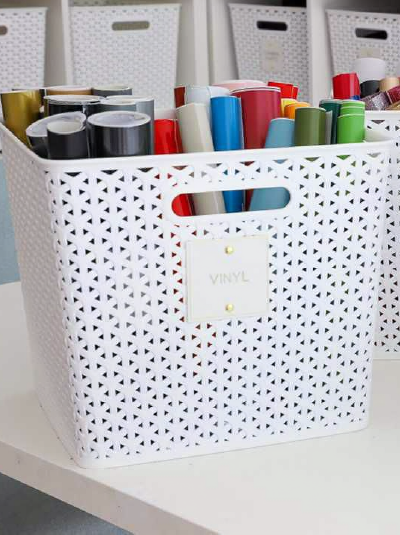We have talked about heat transfer vinyl, there unique features, and how to work with them. If you have a big business and handle large volume of HTV then there one question that you need to know about heat transfer vinyl storage and shelf Life. So, how to properly store HTV and what is its shelf life?
Learning about the optimal HTV Vinyl Storage and Shelf Life conditions can really make the storage process easy. But sometimes this information is hard to find online. So, here’s an article where we are going to try and put together the information in the best possible way.
Vinyl Storage and Shelf Life recommendations by Seaart
Storage and Shelf Life Recommendations:
· Direct sunlight and UV rays cause the vinyl to lose its color and the heat reduces its lifetime. Hence, the best conditions to store HTV is to keep the material in a temperature controlled area. We suggest to store it away from direct sunlight, and in dry area with relative humidity no more than 50%.
· Some vinyls like sign vinyls have a shorter shelf life compared to other types. It is shelf-stable for only 1-2 years. Big manufacturers have specific information related to their vinyls listed on their either their websites or other communication channels.
· Gravity can mess up the material that is going to sit in storage for a while too. So, it is a best practice to store the vinyl rolls upright, not on the side. Storing them on the side can compress certain types of materials and it can become difficult to work with them later on.
· One thing to keep in mind regarding custom screen prints is that they have a shelf life of only up to 6 months or so irrespective of how correctly they were stored.
· Generally, printable material is more sensitive. It is so, even you store in optimal conditions. So, normally it is shelf-stable for over a year.
· All the points above does not mean that all HTVs remain best for a limited period of time and are hard to store. If stored well, most of them have indefinite shelf life. But it hugely depends on how they are stored.
· It is suggested to store materials wrapped in a plastic bag and boxed in the same way they are packaged while shipping.
*DISCLAIMER*
***Please note that these are recommendations by Seaart only. These tips and recommendations under no circumstances gurantee that these are the only optimal ways to store the heat transfer vinyl. Seaart holds no responsibility for any damages created to your vinyl under these recommendations.***

Leave a Reply